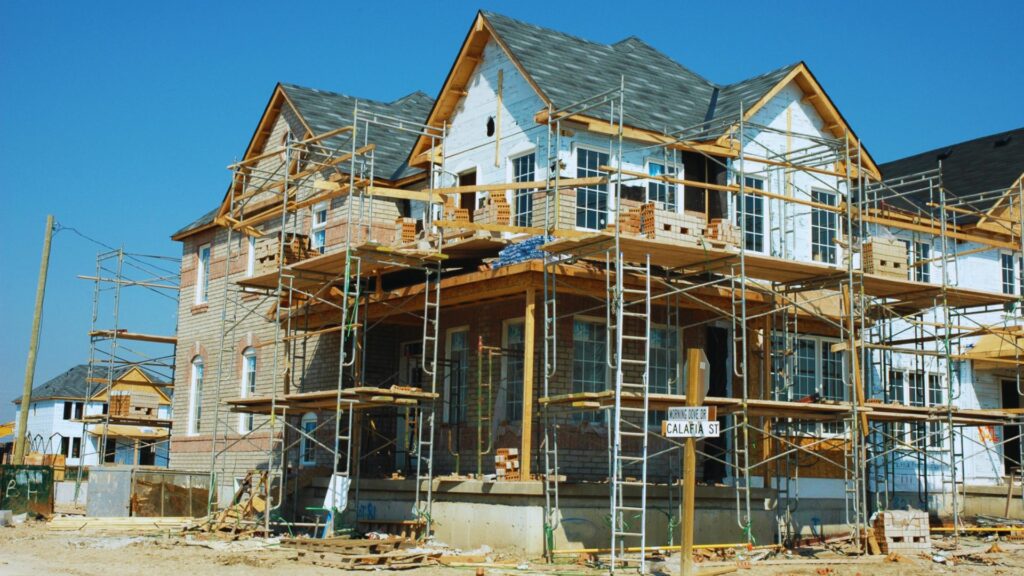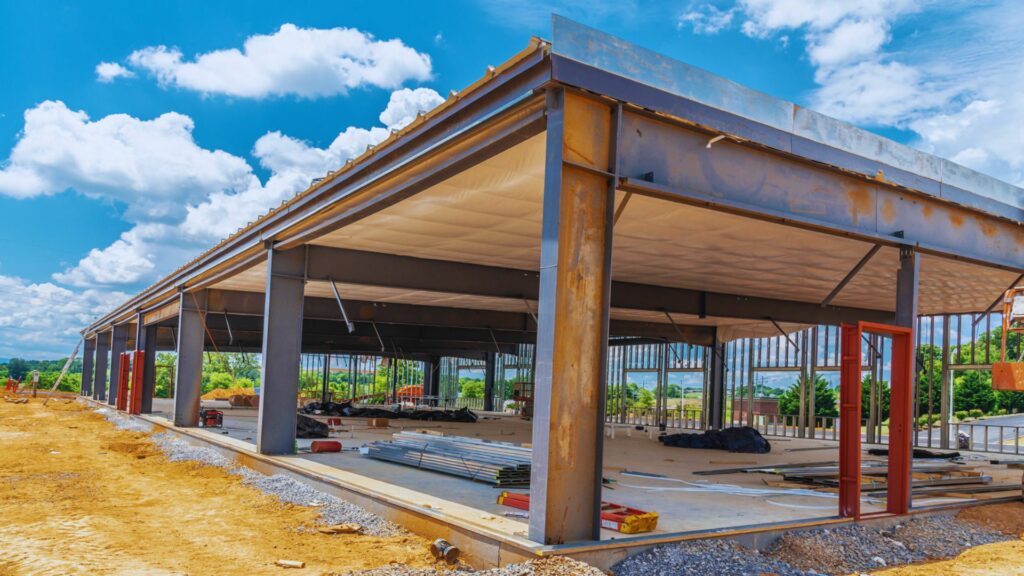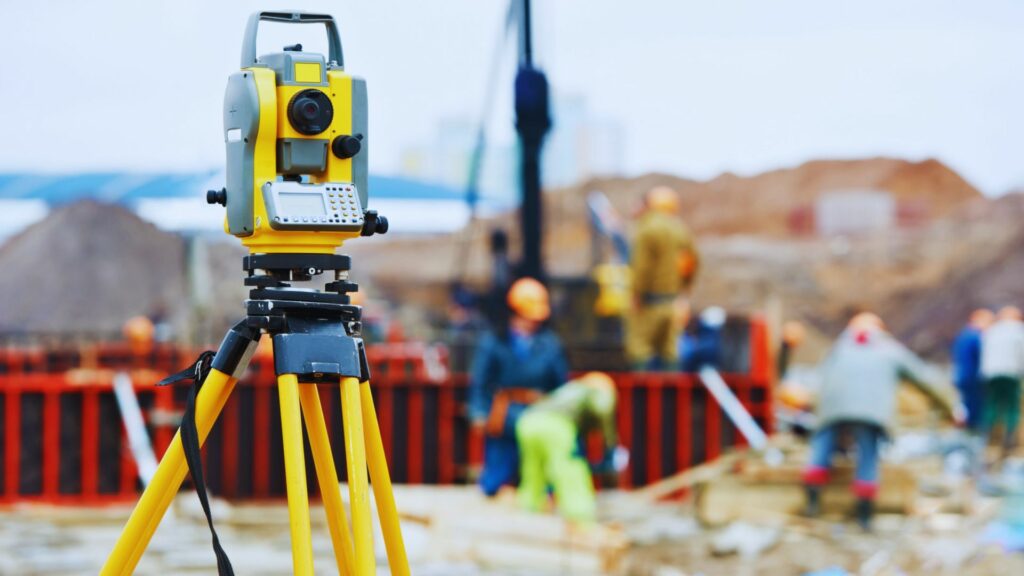Though most people generalize the construction industry to cover all infrastructure needs, there are different niches in construction. A construction niche is a specialized segment of the infrastructure market that offers specialized products or solutions relating to a narrow industry scope and appealing to a market segment.
If you treat all infrastructure needs of the market similarly, you will miss out on enormous opportunities for growing your business. Construction companies that focus on working within a specific niche operate at higher efficiency levels, can charge higher for their work, and can deliver better results than companies with no niche market specialty.
If you want to venture into or grow your construction business, this article will give you a snippet of the most profitable construction niches. Read on to find out more.
Table of Contents
Residential Construction
Residential construction involves renovating, expanding, and constructing spaces for residential occupancy. Residential construction creates millions of jobs and contributes several billion dollars to the American economy annually.
Despite the record number of small and medium-sized upcoming developments, there is a need to deliver high-quality projects at competitive rates to satiate the ever-growing demand.
Developers looking to expand their profit margins are now venturing into residential construction. Some factors contributing to the profitability of residential construction include:
- Scalability: Residential properties are generally small-scale and can be completed quickly. Since residential construction is small-scale, they are usually cheaper in the long run compared to commercial construction.
- Valuation: The valuation process of residential properties is different compared to other forms of construction. Residential properties are valued based on supply and demand, but other properties, like commercial projects, are valued based on risk levels, continuity, and stability.
- Financing: Residential properties require less funding to kickstart the project giving more accessible access to loans for residential developers.
- Vacancy rates: Most people prefer renting or buying near their workplaces, family, or educational institutions. Therefore, residential tenants will always be available regardless of the economic market.
Below are some examples of profitable residential niches.
1. Luxury single-family homes
These residences are unattached to other homes and located on private land. These homes offer more space and privacy compared to other typical residential homes.
There is an increasing demand for these luxury homes, thus driving up the profit margins for the developers. They also have slightly higher maintenance costs, but the owners are usually responsible.
2. Condominiums:
Condos are separate units in a more extensive complex. They usually share a wall or two with other apartments and are subject to homeowner associations that charge monthly or annual dues.
Condos are common in dense metropolitan areas, making them ever in demand.
3. Eco-friendly homes
These homes aim to minimize the environmental impact of construction materials, improve sustainability and reduce energy consumption.
The initial costs of eco-friendly homes tend to be steep, but they offer long-term savings to the owners.
4. Townhouse
A townhouse is a housing complex that combines a condominium and a single-family home. They are typically multi-story buildings and are less expensive to construct than single-family homes.

Commercial Construction
Commercial construction refers to designing, building, or renovating commercial structures for leasing or selling to earn a profit. Some commercial projects include warehouses, retail stores, office buildings, and factories.
Commercial construction projects are generally larger in scale compared to residential projects. These construction sites are also more extensive compared to residential construction sites.
Below are some of the factors that make commercial construction profitable:
- Longer leasing time: Commercial projects attract significantly higher rental yields than residential properties if at a prime location. For most residential properties, owners face a lot of competition amongst themselves. People leasing commercial properties also tend to rent them significantly longer than residential properties. This makes them profitable over time. In most commercial properties, the bigger it is, the longer the lease term.
- Steady Income: Another advantage of commercial properties is that they offer the owner steady income over time, even during difficult times like an economic recession.
- Capital appreciation: Depending on the location of a commercial property, the rent can appreciate significantly over time. Statistically, commercial properties experience the highest inflation rates among investment options. When the rent of a commercial property doubles, so does the property's value. Unsurprisingly, studies show that 48% of American millionaires became so by investing in commercial properties.
- Demand: Since small businesses are on the rise, there is an increasing demand for them to have a place to operate physically. This gives commercial property owners an advantage as they can set their leasing prices to align with the demand.
- Funding: Most commercial projects are funded by the government, private institutions, and lenders. Though securing funding for a commercial project might be a hassle, they still get decent funding, especially if government-funded.
Below are examples of profitable commercial niches.
1. Office buildings
This type of commercial construction ranges from small office spaces, functional facilities, sky scrappers owned by multinational companies.
The type of business affects the occupancy, access, and amenities such as fire escapes.
2. Lodging facilities
This commercial construction primarily focuses on the hotel and motel industry. Buildings in this category must meet specific requirements such as room sizes, privacy, and emergency exits.
These facilities also allow for fluidity of movement and have slightly bigger walkways and elevators.
3. RV parks (Recreation Vehicle parks)
Commonly known as caravan parks, these refer to properties where people with recreational cars can stay overnight or longer. It is a common ground for camping where slots are allocated to an interested party at a fee.
4. Storage Facilities
Many companies seek alternate ways of storage. It enables them to rent out the space to ensure they can access secure and safe storage for their goods.

Infrastructure Construction
Infrastructure construction is the renovation, maintenance, and making of water work, electricity telecommunications, water drainage, carriage of petroleum via pipes, and all other related activities.
Infrastructure construction projects are what keep the essential functions of the world alive. They’re also responsible for the roads and other mass transit ways used to deliver people and goods nationwide.
Infrastructure construction is much more expansive and serves a larger population than other construction types. More land and space are involved in the sector.
Today’s construction trends emphasize technology and other innovative advancements to contribute to our economic growth and well-being. We use and consume products and services related to different types of infrastructure every day when driving to work, flying on an airplane, going to the bathroom, and visiting the doctor’s office.
Below are factors that will contribute highly to the profitability of the sector
- Use of digitized technology
Excellent and modern technology will be used to develop and reinvest goods and services that will, in turn, lead to remarkably high yields.
Digitization can increase infrastructure project profitability by helping it overcome industry challenges, including a shortage of skilled talent, lack of collaboration caused by manual processes, health and safety quality challenges, and low productivity.
- Skilled manpower
To cater to the requirements of a growing, evolving, and increasingly demanding population, the infrastructure vertical desperately needs additional skilled workers. By considering this, encouraging and providing chances to educate people with skills in infrastructure construction will enrich the sector with adequate and skilled manpower.
An updated perception backed up by updated enterprise solutions will lead to more innovative, skilled employees who will boost innovation and drive profitability.
- Improving health and safety measures.
New technology has provided the opportunity to improve with increased precision and decreased human error through automation. For example, embedded sensor equipment progressively enables notifications to be sent to alert teams for maintenance or repair. In this example, the need for find-and-fix projects in hazardous environments is reduced, thus reducing health and safety risks and associated schedule delays.
With workers knowing their safety is being prioritized, they will produce sound, profitable output.
- The complexity of the project
Complexity can refer to the size, scope, design, technology, location, and duration of the project and the number and diversity of stakeholders involved. Complex projects tend to have higher costs, more money uncertainties, and more risks, which can reduce the profit margin and increase the likelihood of disputes and claims.
To deal with project complexity, you must clearly understand the project requirements, scope, and objectives and use appropriate methods and tools to plan, monitor, and control the project activities and resources. This will enable excellent output that will have good returns.
- Market conditions
Market conditions can change rapidly and unpredictably, affecting the availability, quality, and price of the inputs and outputs of the project. For example, an increase in skilled workers or a decrease in material prices can decrease project costs and increase profitability since the cost of production will be low. To cope with market conditions, you must conduct a thorough market analysis and research while adopting flexible and adaptive strategies to adjust to the changing circumstances.
- Great management team
Quality management involves planning, implementing, and controlling the quality processes and activities throughout the project lifecycle, such as design review, inspection, testing, and auditing.
Quality management can affect profitability by impacting the contractor's reputation, customer loyalty, repeat business, and rework costs, defects, and warranty claims. To ensure quality management, you need to establish a quality policy, plan, and system and follow the best practices and guidelines of the industry.
- Communication and teamwork
Communication and collaboration can affect profitability by enhancing the efficiency, effectiveness, and innovation of the project processes and outcomes. To improve communication and collaboration, you must use appropriate communication channels, methods, and tools and foster a culture of trust, respect, and teamwork among the project stakeholders.
Some of the profitable infrastructural construction niches include:
- Power and Energy Infrastructure
The electrical infrastructure oversees projects that deal with power, including; electrical lines, power grids, and innovations in alternative energy. The power is then paid for once installed and provides revenue.
- Road Infrastructure
Road infrastructure construction builds new streets and fixes streets, roads, and highway systems for mass transit. It also oversees developing transportation projects that grant greater transportation access to communities. This eases movement from one place to another.
- Waste Management
Construction waste management works to improve the environment by storing, treating, and eliminating hazardous materials. Sustainable construction practices are used to safely reprocess water for drinking, enhance human health, and dispose of sewage and solid waste.
- Bridges
Many highway bridges are considered deficient and need some repairs, although they are not deemed unsafe for traffic. This type of infrastructure work can take quite some time, as it needs to be completed around flowing traffic. Plus, the work needs to be carefully planned, as most of the work is completed over water, which is more challenging than working on land.
- Mass transit and airports
These systems are becoming the most sought-after construction infrastructure at the moment, as many of these systems are in dire need of repairs or expansion and growth. The focus for many of these is laying or reconfiguring the utilities already in place. However, a few airports are also looking at expanding their current runways to meet the demands of travelers.
- Water supply and resources
Water is a necessary component in life; no one could survive without it. Therefore, the construction industry's infrastructure dealing with water works is in demand. Most of these projects include updating the current water distribution services and finding ways to improve drought resistance.
It is essential for those working on these types of infrastructure to understand how important their job is, especially when it comes to preventing leaks and finding ways to transport water effectively and efficiently.
- Telecommunications
This is one of the fastest-paced construction projects, as many areas still need to be improved regarding access to telecommunication systems. Even those areas with multiple telecommunication systems in place often need more, as the ones they currently have are congested. Anyone in this field must understand how quickly everything changes and how these infrastructures must be continuously updated to keep up with demand.
Technology and Innovation in Construction
The construction industry needs to be faster to adapt to new technologies. In recent years, however, the construction industry is continuously being updated and upgraded with the latest technologies to improve cost, safety, efficiency, and quality.
Some of these developments include construction methods, technology and software innovations, prevailing market conditions, and legislative involvement in new construction technology innovations.
Some new construction technologies are BIM drones, modular construction, virtual and augmented reality 3D printing, and more.

The following are ways technology can improve profitability.
- Know your cost
To be profitable and improve profitability, you need to understand the costs associated with completing each project. This includes not just your job costs but also your overhead costs. If you don’t know what your projects cost to complete, there’s no way of knowing how profitable you are on each job.
You increase product output by choosing software that solves many problems in project administration.
- Use technology wisely
Technological changes can sometimes be costly and difficult to manage. No construction software or technology is worth an existential crisis.
A good approach is to focus on what’s important by asking yourself simple questions. How does this technology strengthen your department and the company as a whole? How does this technology impact your current IT strategy and investments?
- Using artificial Intelligence (AI)
Artificial intelligence has become a vital tool in the construction industry that helps perform complex tasks faster. Constructors can use Artificial Neural Networks to predict costs based on the project size, contract type, and materials to prevent cost overruns.
This will help the construction company create a successful bid while maintaining its profit margins. Also, the building information modeling solution helps contractors create 3D models that give them insights to plan, construct, design, and repair buildings efficiently.
- By eliminating project uncertainties
One of BIM’s best use cases often overlooked is clash detection: You can save money and time on your projects by catching design conflicts and building issues early, minimizing their impact on the project’s plan.
With the right BIM solution, you can take control of your residential construction profit margins by improving time management, coordination, and productivity to reduce the risk of delays and errors.
- By maintaining your residential construction profit margin.
Many residential builders and construction companies haven’t invested in digital construction technology—they wonder if it’s worth the cost and worry their team won’t use the software. Now that you’ve seen how cloud-based solutions can help maintain your residential construction profit margins, you might rethink investing in construction technology; it’s a sensible decision for many companies.
Below are examples of Innovative construction niches:
- Construction robots and drone usage
So far, we have seen the rise in the usage of drones in 2022 and how they have gained popularity. This trend will continue since drones provide real-life updates on construction projects and safety to collapsed buildings by helping find people or construction workers.
- 3D printing
3D printing in construction is when companies or projects sequentially layer materials via computer-controlled processes to create three-dimensional shapes. 3D printers help create new structures on-site or manufacture components off-site for later assembly.
3D printing also makes it possible to reduce waste and further save on transportation and storage costs. However, one of the current challenges with adopting this technology is mass production limitations. Although some 3D printers can produce on a larger scale, they are expensive.
- Modular construction
Modular construction is when a building is constructed off-site, under controlled plant conditions, using the same materials, and designed to the same codes and standards as conventionally built facilities but in about half the time. Buildings are produced in modules that, when put together on site, reflect the identical design intent and specifications of the most sophisticated site-built facility without compromise.
- Virtual Reality (VR) and Augmented Reality (AR)
The application of virtual and augmented reality in the construction industry helps organizations to improve productivity and deliver better customer experiences. A person carrying out the project can wear AR headsets to send site data to the team off-site.
The construction manager can even hold virtual tours to assess the project, which helps reduce errors. When a problem arises, the workers won't have to halt for hours waiting for the manager to provide a solution. They can inspect the project remotely using virtual reality and provide time-saving solutions. This way, the company can handle multiple tasks simultaneously since the manager can give recommendations without visiting the sites.
FAQs
What is the easiest construction business to start?
The easiest construction business to start with is real estate broking. A real estate broker is a pretty lucrative opportunity since most people are venturing into real estate. In this business, you must connect with the buyer and seller and sell the property. You can earn an excellent commission income from the business.
What is the fastest-growing construction market?
Global trends show that the fastest-growing construction market is hotels and motels. Research has shown that the number of hotels and motels being built is rising.
Which type of construction business is the most profitable?
The most profitable type of construction business involves manufacturing, as it targets the entire construction industry. These include cement blocks, ceramics, and fly ash bricks.
Summary
Considering market demand and personal expertise is important when choosing a construction niche.
Investing in the latest construction technologies is undoubtedly an intelligent business move. Finding the tech tools to help you reach your company’s goals is key. As mentioned earlier, onboarding a data collection app is an excellent place to start your digital transformation.
For a construction business to thrive, certain factors must be thoroughly examined by assessing the market. The demand will help one know if the business will make a profit and continue growing from the sales made while having personal skills in the business or area will help you minimize the cost of sourcing labor.

